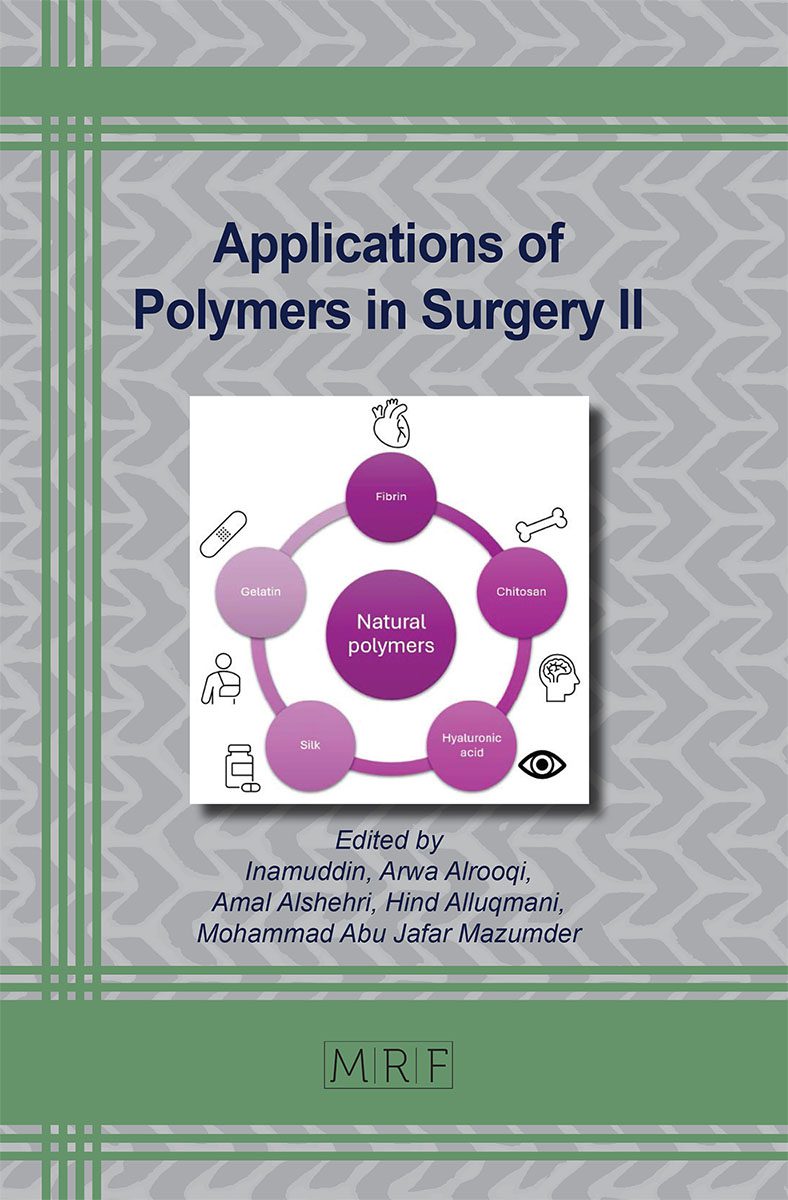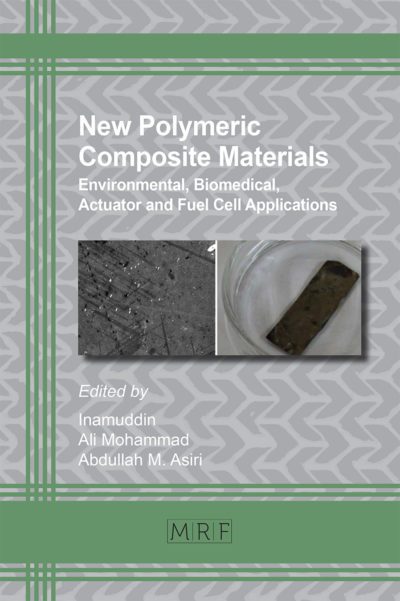Role of Polymers in Cosmetics and Personal Care Harvests: Precarious Impact on Human Health and Environment
Venkatramana Losetty, M. Dhanalakshmi, C. Hazarathaiah Yadav, K. Sivakumar
This chapter discusses the application of polymers in cosmetics and personal care products and also explores how they are hazardous to harm human health and the environment. Cosmetics are used globally for beauty and contain many chemical substances, especially different types of polymers added during formulation. The quality, functionality, and shelf life are increased by the presence of these polymer substances which act as additives, fragrances, preservatives, stabilizers, surfactants, dyes, and shine enhancers. However, many toxic and hazardous polymer-based substances are present in cosmetics beyond acceptable levels. Cosmetic formulations become more attractive and marketable to consumers when bonded with polymers. The polymers are mixed with cosmetic products as modifiers and stabilizers including makeup, skincare, and hair care products. Some polymers are responsible for serious skin damage and even organ damage and can lead to cancer. This chapter will discuss the usage of polymers in cosmetics, and determine their types, like natural, semi-synthetic, and synthetic polymers present in cosmetics, and how their unique properties enhance the need in cosmetic applications. Many of these polymers are bioactive and tend to bio-accumulate and environmental impact which gives significant risk to human health and ecosystems. Therefore, natural polymers are highly valued in cosmetic formulations for their biocompatibility, safety, and environmental friendliness.
Keywords
Cosmetic, Polymer, Human health, Environment, Formulation, Stabilizer, Biocompatibility, Ecosystem
Published online 2/15/2025, 16 pages
Citation: Venkatramana Losetty, M. Dhanalakshmi, C. Hazarathaiah Yadav, K. Sivakumar, Role of Polymers in Cosmetics and Personal Care Harvests: Precarious Impact on Human Health and Environment, Materials Research Foundations, Vol. 172, pp 381-396, 2025
DOI: https://doi.org/10.21741/9781644903353-16
Part of the book on Applications of Polymers in Surgery II
References
[1] I. Aranaz, N. Acosta, C. Civera, B. Elorza, J. Mingo, C. Castro, M. Gandía, A. Heras Caballero, Cosmetics and Cosmeceutical Applications of Chitin, Chitosan and Their Derivatives, Polymers 10 (2018) 213. https://doi.org/10.3390/polym10020213
[2] A. Okunola A, O. Kehinde I, A. Oluwaseun, A. Olufiropo E, Public and Environmental Health Effects of Plastic Wastes Disposal: A Review, J. Toxicol. Risk Assess. 5 (2019). https://doi.org/10.23937/2572-4061.1510021
[3] A.L.V. Cubas, R.T. Bianchet, I.M.A.S.D. Reis, I.C. Gouveia, Plastics and Microplastic in the Cosmetic Industry: Aggregating Sustainable Actions Aimed at Alignment and Interaction with UN Sustainable Development Goals, Polymers 14 (2022) 4576. https://doi.org/10.3390/polym14214576
[4] T.F.R. Alves, M. Morsink, F. Batain, M.V. Chaud, T. Almeida, D.A. Fernandes, C.F. Da Silva, E.B. Souto, P. Severino, Applications of Natural, Semi-Synthetic, and Synthetic Polymers in Cosmetic Formulations, Cosmetics 7 (2020) 75. https://doi.org/10.3390/cosmetics7040075
[5] C. Campanale, C. Massarelli, I. Savino, V. Locaputo, V.F. Uricchio, A Detailed Review Study on Potential Effects of Microplastics and Additives of Concern on Human Health, Int. J. Environ. Res. Public. Health 17 (2020) 1212. https://doi.org/10.3390/ijerph17041212
[6] C.J. Moore, Synthetic polymers in the marine environment: A rapidly increasing, long-term threat, Environ. Res. 108 (2008) 131–139. https://doi.org/10.1016/j.envres.2008.07.025
[7] R.P. Babu, K. O’Connor, R. Seeram, Current progress on bio-based polymers and their future trends, Prog. Biomater. 2 (2013) 8. https://doi.org/10.1186/2194-0517-2-8
[8] T.J. Oliveira, T.C.M. Segato, G.P. Machado, D. Grotto, A.F. Jozala, Evolution of Bacterial Cellulose in Cosmetic Applications: An Updated Systematic Review, Molecules 27 (2022) 8341. https://doi.org/10.3390/molecules27238341
[9] R.H. Waring, R.M. Harris, S.C. Mitchell, Plastic contamination of the food chain: A threat to human health?, Maturitas 115 (2018) 64–68. https://doi.org/10.1016/j.maturitas.2018.06.010
[10] A. Sionkowska, Current research on the blends of natural and synthetic polymers as new biomaterials: Review, Prog. Polym. Sci. 36 (2011) 1254–1276. https://doi.org/10.1016/j.progpolymsci.2011.05.003
[11] H. Aliyar, G. Schalau, Recent Developments in Silicones for Topical and Transdermal Drug Delivery, Ther. Deliv. 6 (2015) 827–839. https://doi.org/10.4155/tde.15.39
[12] H.C. Nam, W.H. Park, Eco-friendly poly(lactic acid) microbeads for cosmetics via melt electrospraying, Int. J. Biol. Macromol. 157 (2020) 734–742. https://doi.org/10.1016/j.ijbiomac.2019.11.240
[13] P. Morganti, G. Morganti, M.-B. Coltelli, Natural Polymers and Cosmeceuticals for a Healthy and Circular Life: The Examples of Chitin, Chitosan, and Lignin, Cosmetics 10 (2023) 42. https://doi.org/10.3390/cosmetics10020042
[14] L. Panariello, A. Vannozzi, P. Morganti, M.-B. Coltelli, A. Lazzeri, Biobased and Eco-Compatible Beauty Films Coated with Chitin Nanofibrils, Nanolignin and Vitamin E, Cosmetics 8 (2021) 27. https://doi.org/10.3390/cosmetics8020027
[15] S. Usman, A.F. Abdull Razis, K. Shaari, M.N.A. Amal, M.Z. Saad, N. Mat Isa, M.F. Nazarudin, S.Z. Zulkifli, J. Sutra, M.A. Ibrahim, Microplastics Pollution as an Invisible Potential Threat to Food Safety and Security, Policy Challenges and the Way Forward, Int. J. Environ. Res. Public. Health 17 (2020) 9591. https://doi.org/10.3390/ijerph17249591
[16] R.P. Gawade, S.L. Chinke, P.S. Alegaonkar, Polymers in cosmetics, in: Polym. Sci. Innov. Appl., Elsevier, 2020: pp. 545–565. https://doi.org/10.1016/B978-0-12-816808-0.00017-2
[17] A.L. Jones, R.S.S. Kramer, Facial Cosmetics and Attractiveness: Comparing the Effect Sizes of Professionally-Applied Cosmetics and Identity, PLOS ONE 11 (2016) e0164218. https://doi.org/10.1371/journal.pone.0164218
[18] J. Kozlowska, N. Stachowiak, A. Sionkowska, Collagen/Gelatin/Hydroxyethyl Cellulose Composites Containing Microspheres Based on Collagen and Gelatin: Design and Evaluation, Polymers 10 (2018) 456. https://doi.org/10.3390/polym10040456
[19] H.K. Ageel, S. Harrad, M.A.-E. Abdallah, Occurrence, human exposure, and risk of microplastics in the indoor environment, Environ. Sci. Process. Impacts 24 (2022) 17–31. https://doi.org/10.1039/D1EM00301A
[20] I.E. Napper, R.C. Thompson, Plastic Debris in the Marine Environment: History and Future Challenges, Glob. Chall. 4 (2020) 1900081. https://doi.org/10.1002/gch2.201900081
[21] H. Aliyar, G. Schalau, Recent Developments in Silicones for Topical and Transdermal Drug Delivery, Ther. Deliv. 6 (2015) 827–839. https://doi.org/10.4155/tde.15.39
[22] M.F. Maitz, Applications of synthetic polymers in clinical medicine, Biosurface Biotribology 1 (2015) 161–176. https://doi.org/10.1016/j.bsbt.2015.08.002
[23] V. Losetty, G.N. Reddy, C.H. Yadav, K. Sivakumar, Study on Microplastic Content in Cosmetic Products and Their Detrimental Effect on Human Health, in: Inamuddin, T. Altalhi, V.C. Fernandes (Eds.), Toxic Eff. Micro‐ Nanoplastics, 1st ed., Wiley, 2024: pp. 253–264. https://doi.org/10.1002/9781394238163.ch11
[24] A. Zielińska, C. Martins-Gomes, N.R. Ferreira, A.M. Silva, I. Nowak, E.B. Souto, Anti-inflammatory and anti-cancer activity of citral: Optimization of citral-loaded solid lipid nanoparticles (SLN) using experimental factorial design and LUMiSizer®, Int. J. Pharm. 553 (2018) 428–440. https://doi.org/10.1016/j.ijpharm.2018.10.065
[25] S. Gupta, R. Bansal, S. Gupta, N. Jindal, A. Jindal, Nanocarriers and nanoparticles for skin care and dermatological treatments, Indian Dermatol. Online J. 4 (2013) 267. https://doi.org/10.4103/2229-5178.120635
[26] T.D. Fornes, D.R. Paul, Structure and Properties of Nanocomposites Based on Nylon-11 and -12 Compared with Those Based on Nylon-6, Macromolecules 37 (2004) 7698–7709. https://doi.org/10.1021/ma048757o
[27] A. Okunola A, O. Kehinde I, A. Oluwaseun, A. Olufiropo E, Public and Environmental Health Effects of Plastic Wastes Disposal: A Review, J. Toxicol. Risk Assess. 5 (2019). https://doi.org/10.23937/2572-4061.1510021













